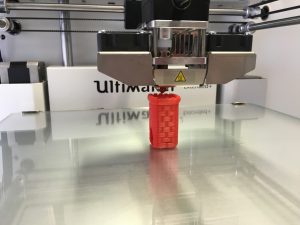
If you haven’t been living under a rock for last 5 years, you will have heard the term “3D printing”, but what is it?
3D printing is a way of digitally creating 3D objects, using CAD designs, from materials like plastic. All sorts of things can be produced in this way, from metal prosthetics to chocolate bunnies. This emerging technology differs from traditional manufacturing techniques in a number of ways.
3D printing uses additive manufacturing
Traditional forms of manufacture, such as milling and even laser cutting, use subtractive techniques, where a big block of material is used and the machines remove material to produce the desired shape. By contrast, 3D printing uses a spool or vat of material. The advantage of this is that you use the minimal amount of material, only what is assimilated into the final object, and so material waste is greatly reduced.
3D printing makes the impossible possible
Subtractive manufacturing has always has its limitations. The issue is that you can’t get inside the material you are forming from the outside. This is not a problem for the superpowers of 3D printing, because it builds the object layer by layer. You can create amazingly intricate internal structures without a second thought.
3D printing doesn’t require tooling
Manufacturing techniques that involve moulds such as injection moulding require moulds to be created first (usually out of a durable material such as metal). This is costly and a great deal of expertise to get right. Getting moulds created has traditionally had long lead times which is prohibitive for prototyping.
The future of 3D printing
More and more research is being done in 3D printing, and every year the list of materials we can 3D print grows longer. This simple idea could arguably become the most important technological breakthrough since the transistor.
